Results 1,461 to 1,470 of 12094
Thread: Anandtech News
-
01-12-12, 08:00 PM #1461
Anandtech: TI Wireless Charging - New Chipsets and 10W charging for Tablets
This morning we stopped by TI's power management group to check out what all they had in store, and got to check out some demos of their new second generation wireless power chipsets. The new solutions meet the 5W Wireless Power Consortium (Qi) standard, and have a smaller total package area. TI demoed the BQ51013 second generation small form factor power Rx PCB charging a variety of devices, including a Kindle. In addition, TI has some newer small form factor (BQ5002010 and BQ5002011) charging Tx solutions that further reduce BOM cost and require lower input voltage compared to their first generation counterparts.
TI also briefly teased its upcoming 10W solution charging an iPad 2. Though the current standard is just 5W for smartphones (1A@5V) obviously charging tablets and larger devices is something coming down the road for the Wireless Power Consortium. At present, inductive chargers achieve around 70% efficiency. Gallery: TI Wireless Charging





At present, inductive chargers for smartphones generally require an external sleeve or accessory battery cover with the inductive coil and charger inside. Newer second-generation Rx solutions will drive down the size of the inductive charging solution, and inductive coils PCB (instead of hand-wound coils) will make it possible to eventually also make including wireless charging support on the boards themselves.
More...
-
01-12-12, 08:40 PM #1462
Anandtech: AMD's Lightning Bolt: Low Cost Thunderbolt Alternative for USB 3.0/DP
One of the things I love the most about AMD is the balance it provides to Intel. While I've spent much of CES looking for Thunderbolt products and lamenting the cost of controllers and devices, AMD put together a concept it calls Lightning Bolt.
Lightning Bolt is an AMD technology that can deliver USB 3.0, DisplayPort and Power over a single cable with mini DisplayPort connectors. I saw the technology demonstrated live, however I wasn't allowed to take any photos.
The technology is designed to be very simple and affordable. On the notebook side is a mux that combines power, DisplayPort and USB 3.0 into a single DP-like cable. The other end of the cable would connect to a Lightning Bolt breakout box that would provide USB 3.0, DisplayPort and power ports.
The cable is a standard mini-DP cable with changes on only two of the pins. AMD's goal is to enable affordable, single-cable docking stations for notebooks. The cost of the mux and associated components on the notebook side would be minimal, around a dollar. The mux would eventually be integrated into a notebook (the AMD demo had them external for demo purposes) and all you'd see is a mini-DP interface with some sort of indication that it was a Lightning Bolt interface. Given that it's a simple mux on the notebook side I'd assume that it would be possible to enable miniDP passthrough and display Lightning Bolt entirely if you wanted to.
There are performance and power limitations to this design. AMD claimed USB 3.0 transfers would be faster than USB 2.0, but not full speed. No word on how much power you'd be able to send over the interface either. As far as the docking stations go, AMD expects that they'll cost about as much as a USB 3.0 hub.
Lightning Bolt won't be ready in time for Trinity's launch in the middle of the year, but AMD hopes to have it on the market by the end of the year.
More...
-
01-12-12, 09:00 PM #1463
Anandtech: Some Thoughts on SandForce's 3rd Generation SSD Controller
I spent a few minutes talking to SandForce in between meetings today and got a general idea of what a third generation SF controller might look like. The SandForce folks are proudly displaying their new LSI business cards at the show, but they are also hard at work on a 3rd generation controller.
The SF-2000 series controllers are already limited on the sequential side by 6Gbps SATA as well as the ONFI 2.x interface. Both need to be addressed to improve sequential performance, which we likely won't see until 2013. In other words, I wouldn't expect to see improvements in highly compressible sequential transfers with the 3rd generation SF controller.
There is tons of room for improvement in small file, random read/write performance. Plan on seeing a significant improvement there from the third generation SF controller. This is mostly a function of adding extra processing power in the controller itself. I'm hearing numbers as high as 2x current random IO performance.
SandForce is also planning on improving write speeds when dealing with incompressible data. Larger internal data structures, a faster processor and some other firmware architecture tweaks can enable better performance here. SandForce tells me that improving performance when dealing with incompressible data is its top priority at this point.
Finally there's talk about looking at other interfaces in addition to SATA. It's possible that we may see a PCIe version of SandForce's 3rd generation controller. This makes a lot of sense, especially as we march towards an eventual SATA Express (PCIe based) standard. Companies with native PCIe based controllers today will have a better chance of influencing the spec and working through the kinks in their own products as the spec is finalized. SandForce also indicated that being able to efficiently aggregate multiple PCIe based controllers would be a very important point to focus on.
As always, SandForce will launch its third generation SSD controller for the enterprise first but we'll probably see client drives show up before that. Enterprise validation takes a lot longer than client, hence the lag in availability despite an earlier introduction.
SandForce isn't officially talking about timeframe for availability, but my guess is we'll know more around the middle of the year.
More...
-
01-12-12, 09:11 PM #1464
Anandtech: Super Talent: Demos PCIe-based RAIDDrive upStream and RAIDDrive II SSDs
It’s a bit sad, really: SATA 6Gbps ony a couple years old and already we’re seeing SSDs push the limits of the interface. While the SATA spec will eventually be updated to support even higher bandwidths, right now companies looking for higher performance need to find other solutions. Several are moving to direct interfaces via PCIe, where even an x4 configuration can offer over three times the bandwidth of SATA 6Gbps. OCZ has the RevoDrive line, and Super Talent has their RAIDDrive. Super Talent had two new models of RAIDDrive on display at CES; the basic model is the upStream 480GB with up to four SSD controllers (SandForce 2200) while the RAIDDrive II supports up to 2TB and eight SF-2200 controllers.
Besides the RAIDDrive cards, Super Talent also had a new SF-2200 SSD brand with the latest gold level firmware on display, the TeraNova. Super Talent mentioned that many SSDs are actually out of spec in their SATA and power connector areas, with the PCB being too close to the connectors and making the SSDs unable to fit properly in hotswap drive bays; the TeraNova has the PCB cut out around the connectors so this won't be an issue.
Super Talent had some benchmarks running to demonstrate the performance potential of the three SSDs, and we grabbed some pictures of their ATTO results that you can see in the gallery. The quick summary is that the single SF-2200 controller in the TeraNova 240GB is able to hit read/write speeds of up to 545/518MB/s, which is similar to what we’ve seen on other SandForce SSDs. Move to the upStream 480GB RAIDDrive and read speeds can break the 1GB/s barrier and top out at 1021MB/s while write speeds topped out at 951MB/s. Finally, the RAIDDrive II (I’m not sure of the size, but I believe it was the 1TB model) more than doubles that on the read speeds at rates of up to 2613MB/s and writes speeds of 1637MB/s. Obviously these are sequential transfer rates, but even so you’ll need to be running workloads for more intense than desktop use before you’re really going to benefit from that much I/O performance.
One of the interesting elements of the RAIDDrive II is how Super Talent adds the SSDs to the board. Each SSD module consists of two PCBs, with the SF-2200 on one board and the NAND flash on the other. The board with the controller also contains a USB to SATA bridge chip, and the cards use USB 3.0 connections and plug into the main RAIDDrive II board. Small LEDs on the surface of the board also show which SSD modules are currently active. There’s also 64MB of RAM on the main PCB and a heatsink and small fan used to cool the RAID chip—I’m not sure what chip Super Talent is using, though I’ll try to find out.
More...
-
01-12-12, 09:11 PM #1465
Anandtech: Motorola Droid RAZR MAXX, Droid 4, and Lapdock 500 Pro Impressions
Anand and I stopped by Motorola this afternoon and got to spend some time with a number of the handset-maker's newly announced products, including the RAZR MAXX, Droid 4, and Lapdock 500 Pro. We covered the announcement, but as a refresher, the RAZR MAXX is a RAZR with a gargantuan 3300 mAh (12.54 Whr) battery and slightly thicker profile, and the Droid 4 is a close relative that eschews the SAMOLED Advanced display for TFT-LCD and includes a 5-row QWERTY keyboard. Both include 4G LTE connectivity and a 1.2 GHz OMAP4430 SoC.
When playing with the RAZR MAXX, it's shocking how a phone with this large of a battery manages to not feel strangely heavy or bulky. Like a number of other Motorola devices, the RAZR MAXX's internal battery is also the higher voltage 3.8V nominal chemistry as well. The MAXX simply closes the thickness difference between the camera bulge and the backside and instead results in a flat surface. The best way to think of it is that the thickest part of the RAZR is no thicker on the MAXX, only the thinner carbon-fiber region puts on some bulk. I'm excited to see how the MAXX does in our battery life tests with that big of a battery.
Motorola also whipped out the purple RAZR which we grabbed some shots of. The white and purple RAZRs are identical to the gunmetal grey device we've already reviewed.
The Droid 4 looks and feels a lot like the RAZR, and doesn't bulk up that much with the addition of a QWERTY keyboard. I came away very impressed with the Droid 4's keyboard, which felt very communicative and comfortable, just like the Droid 3's. The Droid 4 includes a LCD-TFT with RGBW PenTile instead of the RAZR's RGBG Super AMOLED Advanced.
Gallery: Motorola Droid RAZR MAXX, Droid 4, Lapdock 500 Pro





Lastly, we got a brief chance to touch and inspect the Lapdock 500 Pro, which feels like a much more serious, grown up, evenly-balanced notebook than the Lapdock 100. In addition, the Lapdock 500 Pro includes many more I/O options, including Ethernet, D-Sub, an SD card slot, and front facing camera.

More...
-
01-12-12, 09:40 PM #1466
Anandtech: CES 2012 Recap: The Week in Review
Tomorrow will be our last day at CES but we've still got a lot more to cover. If you haven't been following our extensive coverage on Pipeline, I've grouped our CES coverage below for easy reading:
CPUs & GPUs
- Intel Sort of Demonstrates Ivy Bridge Graphics at CES 2012
- AMD Radeon HD 7970 Launch Recap
- Intel Confirms Working DX11 on Ivy Bridge
- Sapphire Shows Off Vid 2X, Motherboards, etc.
- Gigabyte's 7-Series Ivy Bridge Motherboards at CES
- Intel's DX11 Demo, Now on an Ultrabook
- AMD's Trinity APU at CES, Shipping in Mid-2012
- AMD's Lightning Bolt: Low Cost Thunderbolt Alternative for USB 3.0/DP
Cases & PSUs
- SilverStone Continues to Shake Things Up
- EVGA Plans to Enter the PSU Market with the NEX PSU
- Zalman Updates the CNPS Line, Shows Off Cases
- Checking in with the Boutiques
- Corsair Continues to Expand
- Cooler Master and Thermaltake Continue to Expand
SoCs
- Lenovo At CES: Android TV and First Krait Tablet
- FXI Cotton Candy Demo: More Power than You Can Shake a (Thumb) Stick at
- AppliedMicro's Catalina: Integrated USB 3.0 and 802.11ac Support for NAS Platforms
- Qualcomm Announces Snapdragon S4 Member MPQ8064, new Atheros WiFi and Powerline Chipsets
- Ambarella Shows off iOne SoC Applications, Wireless Camera Development Kit
- TI Shows Off OMAP 5 & ARM Cortex A15 at CES
Smartphones
- Huawei Announces Ascend P1 S with 6.68mm thickness
- Live at the AT&T Developer Conference Keynote
- ION Audio Expands iCade Lineup with iCade Core, iCade Mobile, and iCade Jr.
- Samsung Galaxy Note Joining AT&T's Stables
- AT&T and HTC Announce HTC Titan II with 16 MP Camera
- Motorola Announces Droid 4 with LTE, RAZR MAXX
- Verizon Announces Jetpack - Two new LTE-enabled WiFi Hotspots
- Apple releases iOS 5.1 Beta 3 - Updates Baseband Again, 3G Toggle is Back
- Nokia Announces Lumia 900 with AT&T LTE
- Intel Announces its First Medfield Smartphone Partner at CES 2012 - Lenovo K800
- Intel Announces its Second Smartphone Platform Partner - Motorola
- Hands-on with the Sprint Galaxy Nexus LTE
- Motorola Droid 4 Early Test Data Confirms RAZR Internals and Software
- More Shots of the HTC Titan II & Nokia Lumia 900
- Motorola Droid RAZR MAXX, Droid 4, and Lapdock 500 Pro Impressions
Tablets
- ASUS' Transformer Prime TF700T: Improves Wireless, Adds 1920 x 1200 Panel, Available in Q2
- Samsung Galaxy Tab 7.7 LTE Headed to Verizon Wireless
- Eee Pad Transformer Prime TF700T: Hands On with ASUS' 1920 x 1200 Tablet running ICS 4.0.3
- CES 2012 Nvidia Press Conference
- Lenovo IdeaTabs Shown Off with Krait, Tegra 3, and Atom
- Hands-on with the Galaxy Tab 7.7 LTE and Galaxy Note
- More Lenovo Krait Tablet Details: $399 Price Target
- Transformer Prime Gets 4.0.3 (ICS) Update
- NVIDIA Tegra 3: Games Plus SplashTop Streaming of Skyrim
- Sneak Peek at Future Toshiba Tablets
- TI Wireless Charging - New Chipsets and 10W charging for Tablets
- Updated: ASUS Eee Pad MeMO ME370T Shipping in Q2 2012
Ultrabooks, Notebooks & Netbooks
- Acer Unveils the Thinnest Ultrabook, a 15" Ultrabook, a 1080p Tablet and AcerCloud
- Intel's Functional Nikiski Concept PC: Transparent Touchpad Doubles as a Screen Window
- ASUS Zenbook UX Series, Now in Pink
- ASUS Eee PC Flare 1205C/1205CE, X101CH, and 1225B
- Lenovo ThinkPads at CES
- Hands-on with the Samsung Series 9
- Dell Launches XPS 13 Ultrabook
- Intel Shows off Thunderbolt, AppUp on Ivy Bridge Ultrabook Reference Design
- Acer’s Upcoming Laptops: S5 Ultrabook with IVB, TB, and a Motor
- HP Announces ENVY 14 Spectre Ultrabook
- Lenovo’s IdeaPad Yoga 13 with Windows 8: This Is the Ultrabook We Want
- Hands on with HP's Envy 14 Spectre, Envy 15, and Folio
SSDs & Storage
- OWC Mercury Aura Pro Express 6G 480GB SSD Upgrade for MacBook Air
- OCZ's Indilinx Everest 2 Launching in June 2012, Features Vastly Improved Random Performance
- OCZ's 4TB 3.5" Chiron SSD
- OCZ Z-Drive R4 CloudServ (RM1616) Features Sixteen SandForce Controllers
- OCZ Scores an Ultrabook Design Win for Everest: LG Super Ultrabook Z300
- HighPoint Aggressively Pursuing Consumer Market
- Patriot SSDs, Flash, and Large Memory Applications
- Mushkin's 1.8", mSATA & PCIe SF-2281 SSDs at CES
- Patriot’s Portable Cloud Storage and Media Streamers
- Crucial 50GB Adrenaline SSD Cache, Available in Q1
- CES: Seagate Combines 500GB Portable Drive With Mobile Hotspot in Proof of Concept
- Synology's DSM 4.0 with CloudStation : A Private Dropbox Solution
- QNAP at CES : SMB Lineup Refresh and a 200TB+ SAS Storage Rack
- Dune HD Pro : A Premium Entertainment System using the Sigma Designs SMP8910
- Some Thoughts on SandForce's 3rd Generation SSD Controller
- Super Talent: Demos PCIe-based RAIDDrive upStream and RAIDDrive II SSDs
Thunderbolt
- LaCie at CES: 2big & eSATA Thunderbolt Hubs
- OCZ's Portable Thunderbolt SSD: Lightfoot
- Elgato's Thunderbolt SSD: Bus Powered, 120/240GB, Available in February
- MSI's Z77 Ivy Bridge Motherboards at CES, Now With Thunderbolt Support
- MSI's GUS II: External GPU via Thunderbolt
- Seagate's GoFlex Thunderbolt Adapters
- Belkin Brings Home Automation, TV and Thunderbolt Solutions to CES
- Cactus Ridge: Understanding the New, More Affordable Thunderbolt Controller
- The First Thunderbolt Speed Bump: Likely in 2014
HTPC
- Zotac's Cedar Trail ZBOX ID80 Uses Discrete GPU
- Zotac's ZBOX AD04 Gives HTPC Users an AMD E-450 APU
Networking
- Dropcam HD: Cloud Based Home Surveillance Goes Mainstream in 720p
- D-Link at CES : Cloud-Friendly Routers and IP Cameras
- 802.11ac RF Hands-On with Buffalo AirStation WZR-1750H
- j5Create Wormhole Switch Brings KVM and File Sharing Across Mobile and Desktop
Displays
- ASUS' VA278Q: 27-inch 2560 x 1440 IPS Display Due Out This Year
- Canonical Brings Ubuntu To Televisions
Input Devices
Art Lebedev Studios Expands Optimus Line
More...
-
01-13-12, 04:23 AM #1467
Anandtech: CES 2012 LTE Face-Off - AT&T versus Verizon Wireless
My friends often think I've lost my mind given how many times I run speedtests on handsets in the process of reviewing them. The reason I'm compulsive about testing cellular network throughput and conditions is because it's massively important to both the overall smartphone experience - remove the cellular connection, and you've got a very expensive personal media player at best. We've taken a good look at Verizon's 4G LTE a number of times, however we haven't yet given AT&T's LTE the same treatment, though it's coming soon.
We're wrapping up CES 2012 in Las Vegas, and the whole time I've been obsessively running throughput tests using Ookla's speedtest.net application on an HTC Vivid and CDMA/LTE Galaxy Nexus, two UE Category 3 devices on AT&T and Verizon Wireless LTE, respectively. I thought it worth sharing how AT&T LTE has stacked up next to Verizon Wireless 4G LTE during CES thus far. I've been running tests on both phones at the same time in both the Las Vegas Convention Center and Venetian CES venues in between meetings, as well as up and down The Strip during the convention. This isn't meant to be super scientific, but gives a decently fair gauge for how things have performed thus far.
The results are pretty interesting, and show that AT&T's LTE was slightly faster than Verizon 4G LTE during the show, though the two end up being pretty close at the end of the day. I've done the same statistical breakdown we do for smartphone reviews for the results, and made some color-coded histograms as well. I ended up running just north of 200 tests total, so ~100 per device.
AT&T LTE Results
Downstream Stats (Mbps)Verizon Wireless LTE Results
Avg: 17.681; Max: 45.708; Min: 3.78, StDev: 9.000
Upstream Stats (Mbps)
Avg: 6.575; Max: 14.188; Min: 0.105, StDev: 3.234
Latency Stats (ms)
Avg: 107.549; Max: 134; Min: 65, StDev: 8.999
Downstream Stats (Mbps)
Avg: 11.185; Max: 33.571; Min: 0.184, StDev: 6.965
Upstream Stats (Mbps)
Avg: 7.133; Max: 16.44; Min: 0.135, StDev: 4.038
Latency Stats (ms)
Avg: 126.41; Max: 439; Min: 83, StDev: 51.554
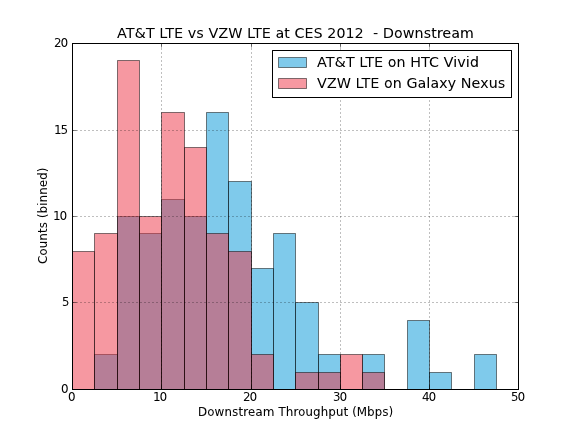
The data ends up being pretty intriguing, and neither network honestly comes out dramatically ahead of the other. This isn't surprising considering both are running 10 MHz FDD-LTE on the 700 MHz band right now. AT&T also can deploy a 5 MHz FDD-LTE carrier on AWS in Las Vegas, though I'm not sure it is currently lit up, and can't check if it's in use on the HTC Vivid like I can the Samsung Skyrocket. AT&T LTE posted better downstream numbers than VZW LTE overall and came in with a higher maximum throughput of just over 44 Mbps down, but is admittedly nowhere near as loaded with devices as Verizon's year-old 4G LTE network.
Subjectively, Verizon's 4G LTE coverage is also better than AT&T's in Las Vegas. I couldn't take down numbers on the handsets, but needless to say there were a number of areas where AT&T LTE didn't propagate where VZW LTE was perfectly fine. We got better 4G LTE signal in more casinos and hard-to-reach areas in the Venetian with Verizon than AT&T, though admittedly Verizon has been deploying and improving its network for much longer than AT&T.
More...
-
01-13-12, 09:50 AM #1468
Anandtech: Toshiba Demos Excite 10.1” and Concept Tablet Designs
We reviewed Toshiba’s Tegra 2-based Thrive 10.1” late last year and from a design standpoint, we were pretty disappointed with it. While elements like the removable battery, full size ports, and rubberized back cover were well done, overall the Thrive just wasn't designed as well as the leading Android tablets. It hit a more value oriented price point than higher end products like the Samsung Galaxy Tab 10.1, but even compared to more midrange tablets like the Asus Transformer, the Thrive just wasn't competitive.
Toshiba learned a lot from their experience with the Thrive, and clearly desire to improve on their tablet designs in the future. To that end comes the new Excite 10”, a tablet that represents a dramatic step forward from the Thrive, significantly improved in almost every way. Gone are the curved edges, rubber backing, and massively thick design. In its place, we find an extremely slick looking tablet that can easily compete with the top tablets. It's 7.7mm thick, so it's definitely one of the thinnest new tablets on the market. The back is flat and made of magnesium alloy, with a rounded rim around the edge of the device.
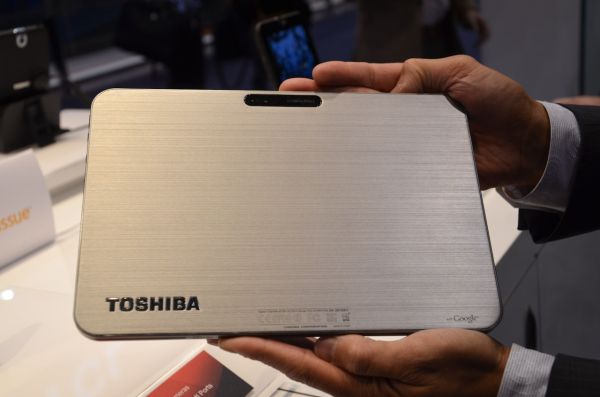
Gallery: Toshiba Excite 10" - CES 2012





Spec-wise, the Excite has a 10.1" 1280x800 display with an IPS panel and Gorilla Glass covering the screen (fixing our only two complaints with the Thrive's otherwise excellent display panel). It's running TI's OMAP 4430 inside clocked at 1GHz. The higher clocked OMAP 4460 (1.5GHz) didn't fit in the thermal envelope Toshiba was shooting for with the Excite, there just wasn't enough heat being dissipated to handle the increased clock speeds. The Excite does lose the full-size ports of the Thrive, though that makes sense given that a standard size HDMI connecter is actually thicker on its own than the entire chassis of the Excite (!). The units we went hands on with had Ice Cream Sandwich installed on them, the final device may ship on either Honeycomb 3.2 or ICS depending on when the Excite hits retail as well as how long it takes Toshiba to finalize the ICS port for the Excite.
I must say, I'm absolutely in love with the industrial design of the Excite. It also feels great in hand, a completely opposite experience from the original Thrive. It's a very premium feeling device, and it has a surprisingly solid frame even with the utter lack of thickness. I'm really impressed to see how far Toshiba has come in terms of design and quality since the Thrive was shown off here last year. Toshiba envisions the Excite as a premium level product slotting above the Thrive, so the Thrive will still be sold alongside the Excite. MSRP is $529 for the 16GB and $599 for the 32GB, price points that I think are on the optimistic side given that a similarly premium design-oriented product launched recently with the Tegra 3 quad-core SoC for $499/599 for 16GB/32GB. Availability is expected close to the end of Q1, and we'll definitely have an evaluation unit to look at when it does hit market.
Gallery: Toshiba Demos Excite 10.1” and Concept Tablet Designs_thumb.jpg)
_thumb.jpg)
_thumb.jpg)
_thumb.jpg)
_thumb.jpg)
_thumb.jpg)
Toshiba also showed off a few tablet design concepts, with 5.1", 7.7", and 13.3" form factors being shown off. The industrial design used across the entire lineup is more mainstream-oriented than the high-end Excite, though in this case that still means a relatively thin body, clean lines, and a textured plastic backing. Overall they feel pretty good, and are a significant step forward from the rather clunky Thrive design. The 7.7" model with an OLED screen especially was impressive in both in form factor as well as feel and industrial design. The 13.3" model was an interesting one in that we haven't seen a whole lot of larger tablet form factors at CES this year. I personally feel like it's something that really lends itself to being a Windows 8 tablet, but Toshiba officially says that they are still evaluating both hardware and software choices for all of the future tablet designs. It's worth noting that all of the design concepts were running Android, and it's a distinct possibility that both Win8 and Android models will exist. Toshiba genuinely seems to be agnostic on a hardware platform level (as shown by their use of Tegra 2 in the Thrives and OMAP 4 in the Excite) so it's not difficult to believe that they don't have a silicon partner finalized yet for any of the concept tablets. These prototypes were hand built preproduction units, so build quality was obviously not something we could evaluate, but even so, I came out with high hopes for Toshiba's tablet future. Availability was expected to be Q3 onwards, with the 5.1" model with a 21:9 aspect ratio screen being made primarily for the Japanese market and probably not having high hopes for a US launch.
Gallery: Toshiba Concept Tablets - CES 2012



More...
-
01-13-12, 10:20 AM #1469
Anandtech: AMD's 4K and BF3/Video Conferencing Eyefinity Demos at CES
One of the underlying themes of CES this year was the transition to 4K displays. AMD had a 4K (4096 x 2160) demo at its booth driven by a Radeon HD 7970. Most 4K displays require multiple inputs, which was the case in AMD's demo. Two DisplayPort outputs from the 7970 drive the panel in the shot above. AMD ran both video playback and a 3D rendered test as a proof of functionality. If the high-end of the PC space moves to 4K eventually that will continue to drive high-end GPU demand thanks to the 2.1x increase in pixel count over a standard 30-inch display.
AMD also had a 5x1 Eyefinity setup (not using 4K displays) running off of two 7970s showing a video conferencing app (ooVoo) running alongside Battlefield 3. This was of course one of the original intents of Eyefinity: to deliver a more immersive experience. The addition of video conferencing is a nod to a usage model where you are not only playing a game that makes you feel immersed but you're also able to look to your left and right and see your teammates.
More...
-
01-13-12, 11:40 AM #1470
Anandtech: ECS X79R-AX (Black Extreme) Review
Over the past 12 months I have covered a number of ECS boards, from the Sandy Bridge and Fusion range, including one with a Hydra chip. Looking back on those, there was a distinct running theme – a willingness to offer the consumer perhaps something different. My tour of the ECS headquarters back in June, and a Q&A session with an ECS VP, gave credence to ECS pushing more into the consumer market rather than their roots in OEM. X79 was a focus for this, and today we are seeing the fruits of that perseverance, in the X79R-AX (Black Extreme) motherboard. Read on for the full review!
More...
Thread Information
Users Browsing this Thread
There are currently 19 users browsing this thread. (0 members and 19 guests)




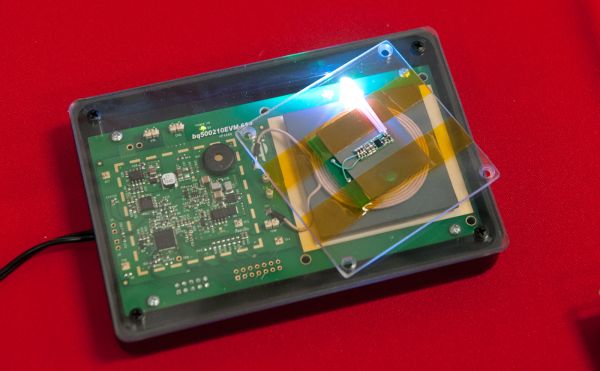


 Quote
Quote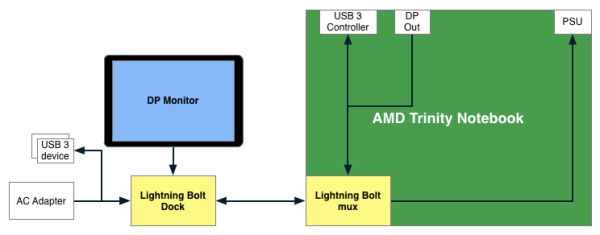

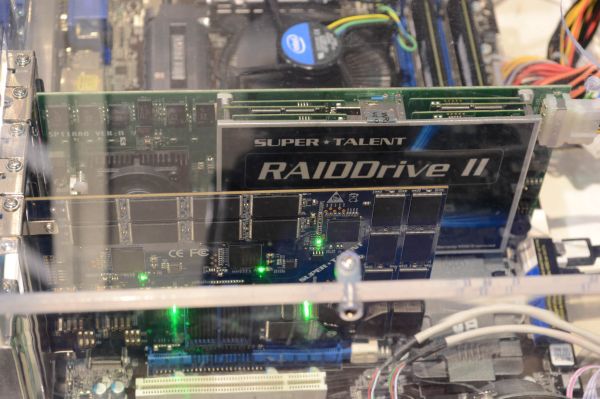
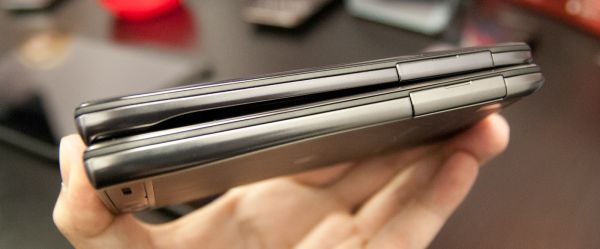

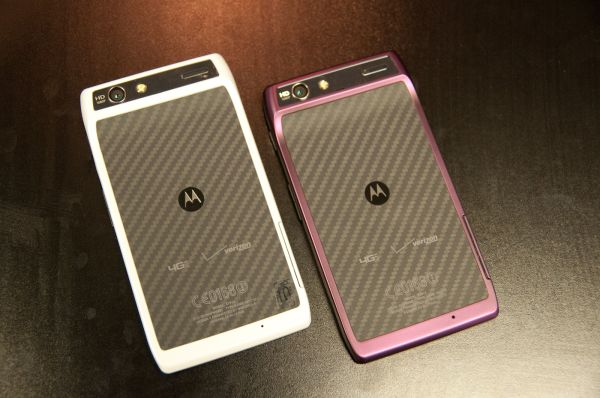
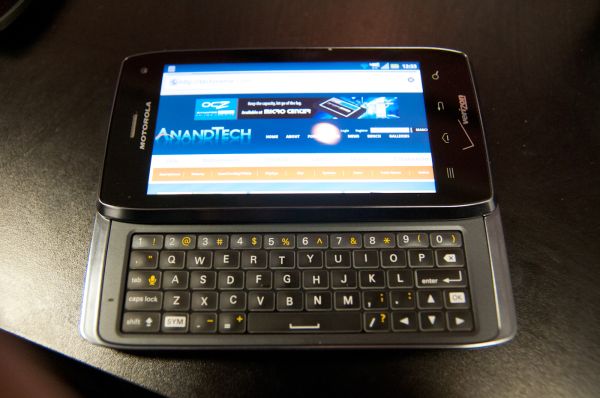
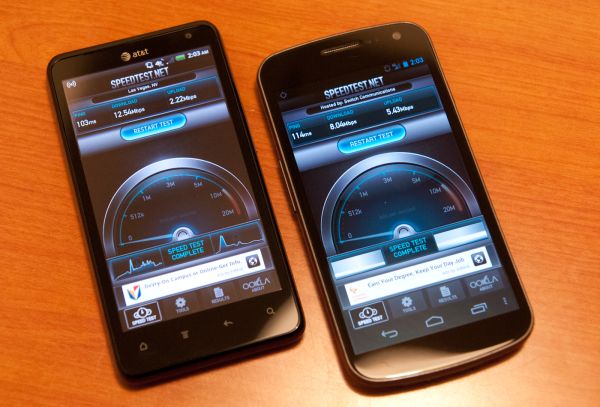
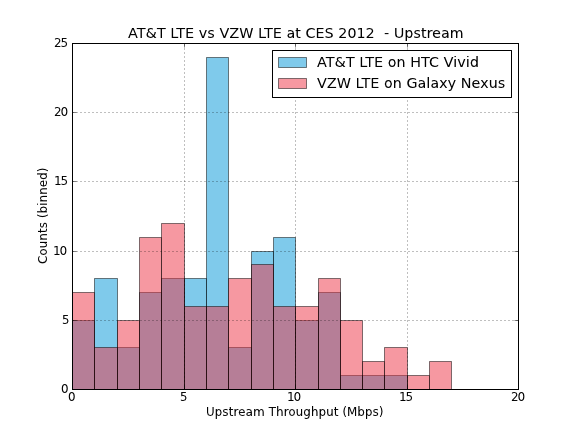
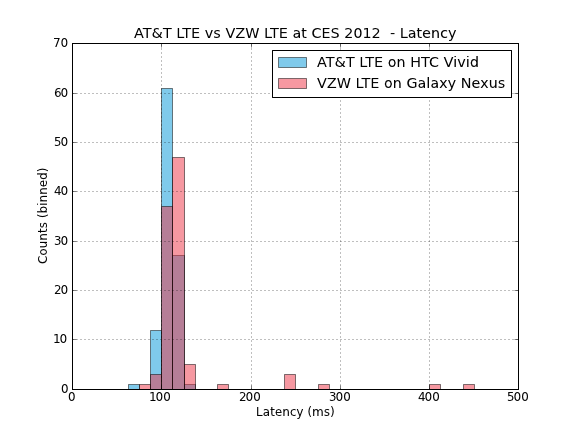

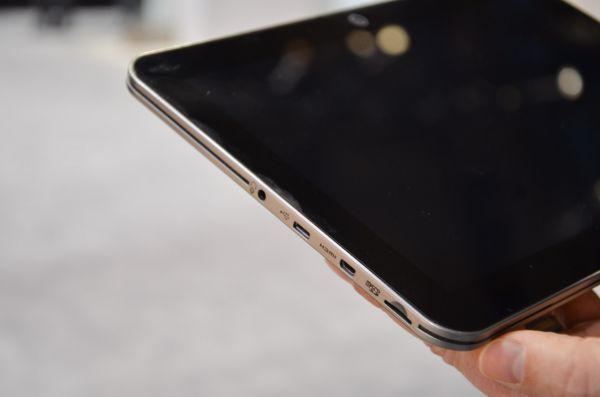
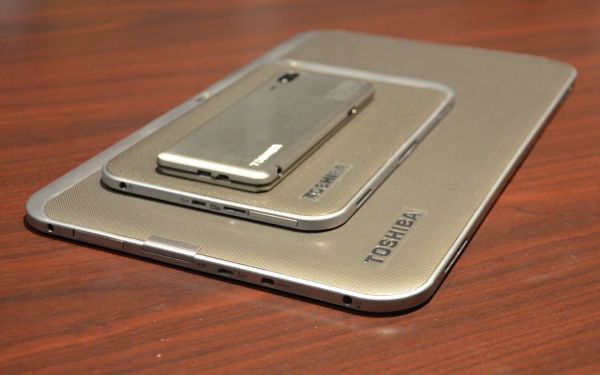
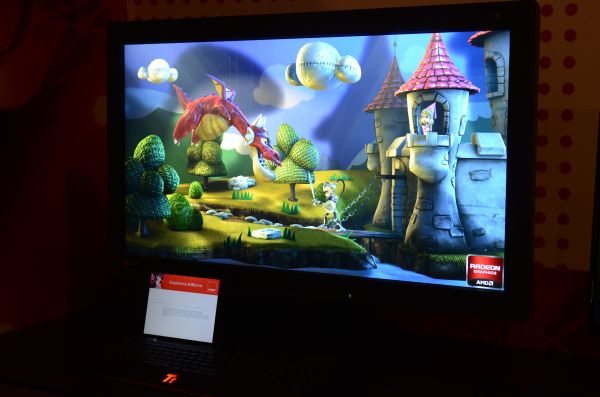
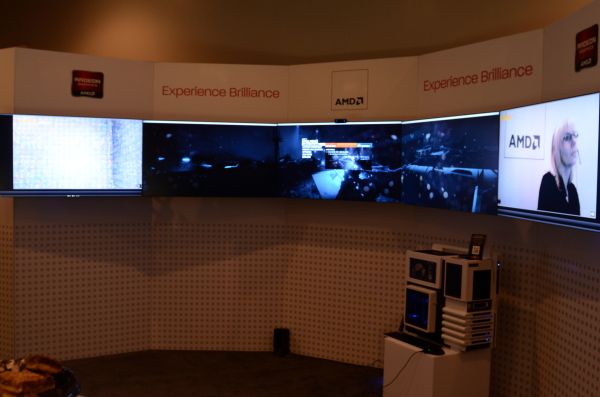
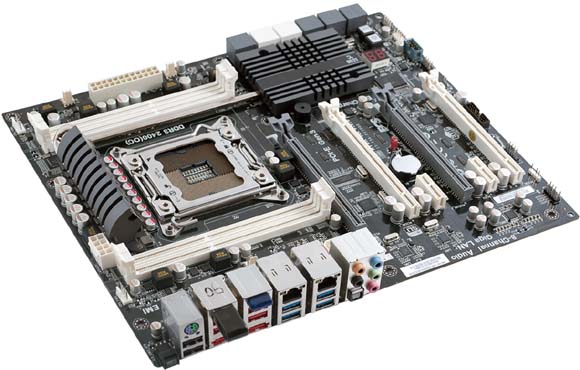
















Bookmarks